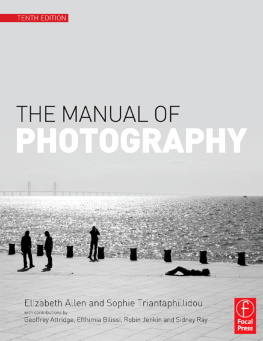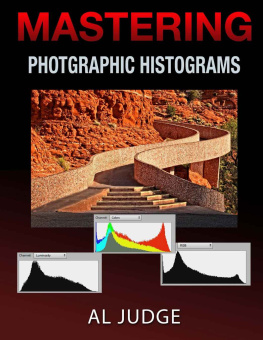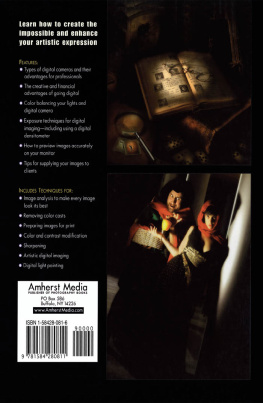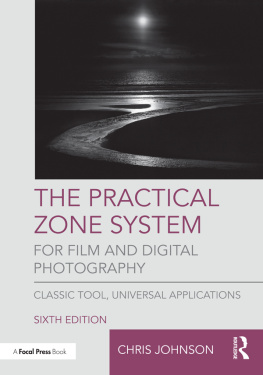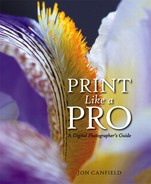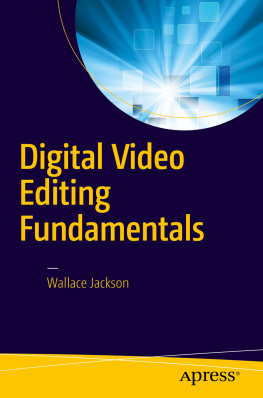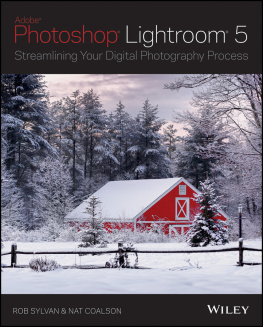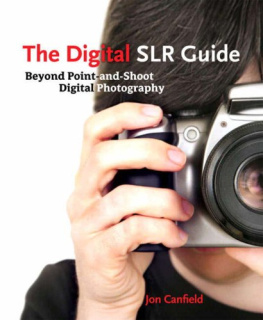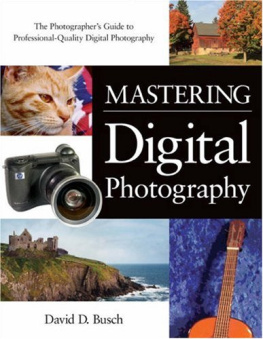The Digital Zone System
Taking Control from Capture to Print
The Digital Zone System
Taking Control from Capture to Print
Robert Fisher

Robert Fisher (rf-photography.ca)
Publisher: Gerhard Rossbach
Editor: Joan Dixon
Copyeditor: Aimee Baldridge
Layout and Type: Cyrill Harnischmacher (lowbudgetshooting.de)
Cover Design: Helmut Kraus (exclam.de)
Printer: Everbest Printing Co. Ltd
Printed in China
ISBN 978-1-937538-13-2
1st Edition 2012
2012 Robert Fisher
Rocky Nook, Inc.
802 East Cota St., 3rd Floor
Santa Barbara, CA 93103
www.rockynook.com
Library of Congress Cataloging-in-Publication Data
Fisher, Robert, 1964
The digital zone system : taking control from capture to print / by Robert Fisher. --1st edition.
pages cm
Includes bibliographical references.
ISBN 978-1-937538-13-2 (pbk.)
1. Zone system (Photography) 2. Photography--Digital techniques. I. Title.
TR591.F57 2012
771.44--dc23
2012019153
Distributed by OReilly Media
1005 Gravenstein Highway North
Sebastopol, CA 95472
Many of the designations in this book used by manufacturers and sellers to distinguish their products are claimed as trademarks of their respective companies. Where those designations appear in this book, and Rocky Nook was aware of a trademark claim, the designations have been printed in caps or initial caps. They are used in editorial fashion only and for the benefit of such companies. They are not intended to convey endorsement or other affiliation with this book.
No part of the material protected by this copyright notice may be reproduced or utilized in any form, electronic or mechanical,including photocopying, recording, or by any information storage and retrieval system, without written permission of the copyright owner. While reasonable care has been exercised in the preparation of this book, the publisher and author assume no responsibility for errors or omissions, or for damages resulting from the use of the information contained herein.
This book is printed on acid-free paper.
Introduction
Many people will read the title of this book and think the idea of using the Zone System for digital photography and digital printing is nothing but sheer heresy. And to those people it probably is. Others have, over the years, tried to opine on whether Ansel Adams would have stuck steadfastly to his wet darkroom, or if he would have embraced digital photography and Photoshop. Many photography magazines, particularly those with an outdoor/landscape theme, reference Adams regularly and fill many column inches discussing how Adams would have adapted in the digital photography era. Im not going to presume either way; Im simply going to take some of his techniques and methods and apply them to the editing and printing of digital photographs, both black-and-white and color.
The digital age of photography and the digital darkroom have given photographers access to tools and methods far beyond what existed in the traditional wet darkroom. In addition to giving us more tools including digital techniques to achieve the effects of old-style dodging and burningdigital photography has made life simpler in many ways.
The mantra for the Zone System was, Expose for the shadows; develop for the highlights. Ill go into this more throughout the book, but what it meant for black-and-white film was that the photographer could get more detail out of shadow areas and at the same time retain detail in highlight areaswithin the brightness range of the filmby adjusting exposure and development and taking advantage of how each of these affects shadows and highlights differently on the film. What it really means is control. Taking control of the finished result rather than leaving it to chance. Taking control of your photography from camera to print. The Zone System was originally created for black-and-white sheet film because with individual sheets you could precisely control the exposure and development of every shot. When roll film became more popular, the idea of the Zone System became less practical unless the photographer was willing to switch rolls. This was easier with medium format, since the photographer could carry several camera backs loaded with film and each roll could be exposed differently. With small-format 35 mm film, switching rolls was more cumbersome, and thus an alternative to the Zone System called the Modified Zone System was conceived.
Some will suggest that with techniques such as blended exposures and High Dynamic Range (HDR) there really is no need for a Zone System approach in digital photography. I, obviously, disagree. Blended exposures and HDR are techniques to expand the brightness range of an image beyond what the sensor is natively able to capture, but those techniques are still just starting points. Once two or more exposures have been blended, or five or nine exposures have been merged into an HDR image, the photographer need not stop. The blended-exposure image or the 32-bit HDR image or the tonemapped HDR image becomes only the starting point. Ill talk later about shooting in RAW format, but .
Just as when the Zone System is used with black-and-white sheet film to gain control, the Digital Zone System (DZS) is also about control. Its about taking fine control of a digital photo to make adjustments to the brightness ranges of small areas of the image, which, in the end, will more effectively enhance the whole.
Throughout the book, anything I provide descriptions of, anything I show illustrations or screen captures of, and anything I provide step-by-step directions for will be done in Adobes Photoshop CS6 or Lightroom 4. There are certainly other editing software packages available, such as Photoshop Elements, Paint Shop Pro, and the freeware GIMP, to name a few, but Photoshop from Adobe is the state-of-the-art. I believe it has the greatest level of functionality and the best color-management capabilities of any of the editing packages currently on the market. Lightroom has largely caught up in version 4 with the addition of soft proofing for printing, but not everyone uses Lightroom and you cant use the DZS techniques in that application. Thats not to say some of the techniques in this book cant be done with other software. Perhaps they can. It is also not to say that other editing packages are unworthy, because thats not true. What I am suggesting, though, is that if youre interested in advanced editing techniques, then, in my opinion, youre better off having Photoshop for that work.
This book is not meant to be an introduction to Photoshop or Lightroom. Rather, its for those already familiar with these programs to learn a new approach to image editing; using the tools youre already familiar with but in a new way. Youll learn new methods that allow you to gain tremendous control over editing your images and youll achieve superior results.
The last thing I should note before you read on is that this book is not intended as a replacement for your camera manual or as a technical treatise on photography. You already have a camera manual and there are many other books out there on the technical aspects of photography. This is intended to be a practical discussion of photography and in particular an editing technique that you may find useful in your photographic work. Im not going to go into deep technical discussions on the concepts discussed in various parts of the book. I want to keep it as free of the more esoteric technicalities as possible and concentrate on practical matters. There wont be discussions of how to set your camera in any particular mode or how to select shutter speeds or apertures. I shoot Nikon. You may shoot Canon. Or Pentax. Or Sony. Or... The DZS is not about any particular camera or manufacturer. It is about a process, and in that regard the camera maker you prefer is irrelevant.


